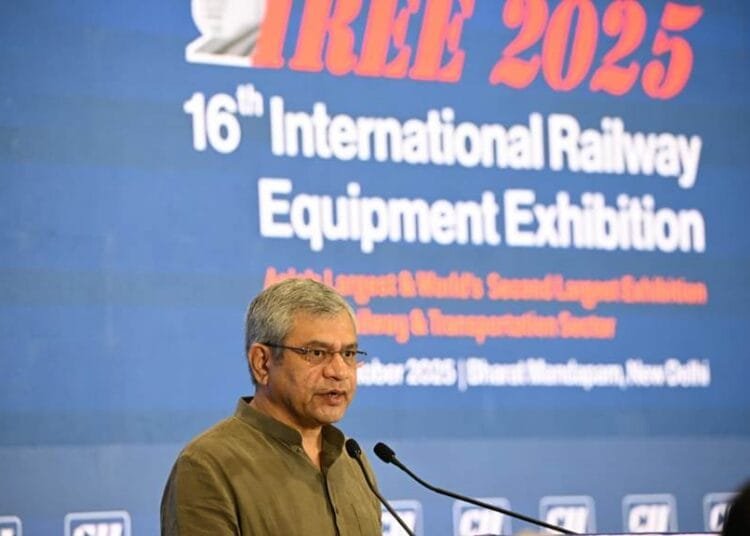Vande Bharat 4.0 rails to be launched in 18 months
Minister for Railways Ashwini Vaishnaw has announced plans to develop dedicated passenger corridors across the country, engineered for maximum speeds of up to 350 kmph with an operating speed of 320 kmph https://www.commerce.gov.in/.
The target is to develop around 7,000 km of dedicated routes by 2047, he said at the inauguration of 16th International Railway Equipment Exhibition-2025, Asia’s largest and the world’s second-largest railway exhibition in New Delhi on 15 Oct.
“These corridors will be equipped with indigenously developed signalling systems and modern Operations Control Centres (OCCs),” said the Minister, informed that India is working on the next generation of high-speed trains, with a strong focus on the export market http://indianrailways.gov.in .
He stated that India is currently operating Vande Bharat 3.0, which represents a significant improvement over its earlier versions, and meets international benchmarks, capable of accelerating from 0 to 100 kmph in just 52 seconds, faster than many trains in Japan and Europe while maintaining lower noise and vibration levels.
He added that Vande Bharat 4.0 is expected to be launched within the next 18 months, aiming to set global benchmarks in every aspect of performance and passenger experience. “The goal is to establish Vande Bharat 4.0 as the global standard, a train so advanced in quality and comfort that countries around the world would aspire to adopt it.”
Vaishnaw also updated the event delegates on progress of Amrit Bharat trains. He noted that Amrit Bharat 2.0 is operational, while version 3.0 is under development based on push-pull technology—suitable for long-distance journeys. Amrit Bharat 4.0 will feature next-generation trainsets and locomotives.
He added that within the next 36 months, the new-generation passenger locomotives are expected to be designed, manufactured, and ready for testing.
Further, the Minister pointed out that Railway budget has been continuously increased. In the last 11 years, more than 35,000 kilometres of new tracks have been laid and 46,000 kilometres of electrification has been completed.
He informed that the Indian Railways is now also emerging as a major exporter of rail engines manufactured in India and supplied to railways in Africa, Australia, and many other countries https://sbi.com.in/.
He stated that in the year 2024-25, a record more than 7,000 coaches, approximately 42,000 wagons, and 1,681 locomotives were produced. Along with this, the country’s first 9,000 HP electric locomotive was inaugurated, while 12,000 HP locomotives are already in operation.
Vaishnaw also said that Indian Railways, which serves more than 20 million passengers daily, has now become the world’s second-largest network in freight transport, surpassing the US. He said the bullet train project is progressing rapidly and the Dedicated Freight Corridor work has been 99% completed https://www.bseindia.com/.
“Under the Amrit Bharat Station Scheme, more than 1,300 railway stations across the country are being redeveloped,” underlined the Minister.
Indian Railways has constructed several remarkable infrastructure projects, including the Chenab Bridge, 35 metres taller than the Eiffel Tower, India’s first vertical lift Sea Bridge at Pamban, and the Bairabi Sairang bridge, 42 metres taller than Qutub Minar https://www.nseindia.com/.
Priority is being given to safety and technological innovation in railways. For this, a budget of Rs.1.16 lakh crore has been allocated for the current financial year, which also includes the indigenous safety system KAVACH.
The exhibition, based on the theme ‘Future-Ready Railways’, was held 15-17 Oct in New Delhi. The event featured participation from over 450 exhibitors representing more than 15 countries – a wide range of display of modern rail and metro products, innovations, and sustainable solutions. Fiinews.com











